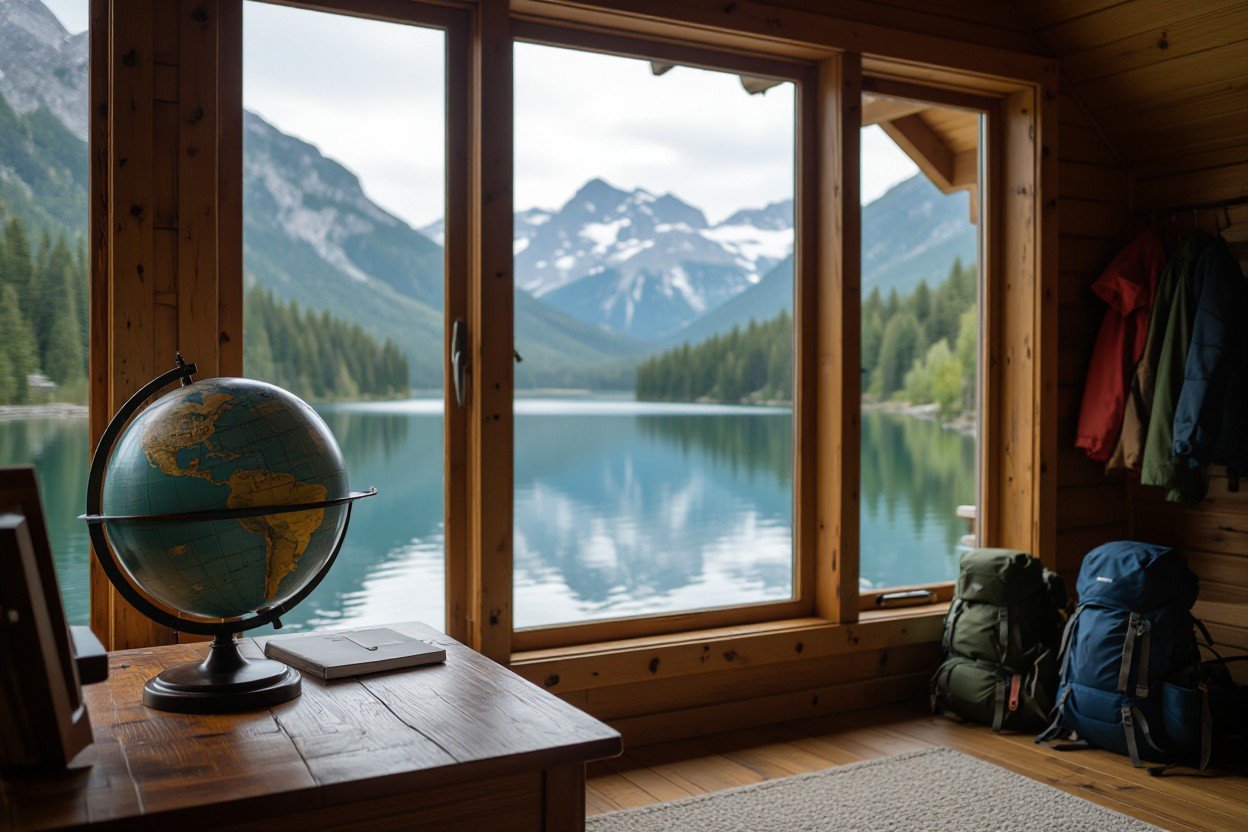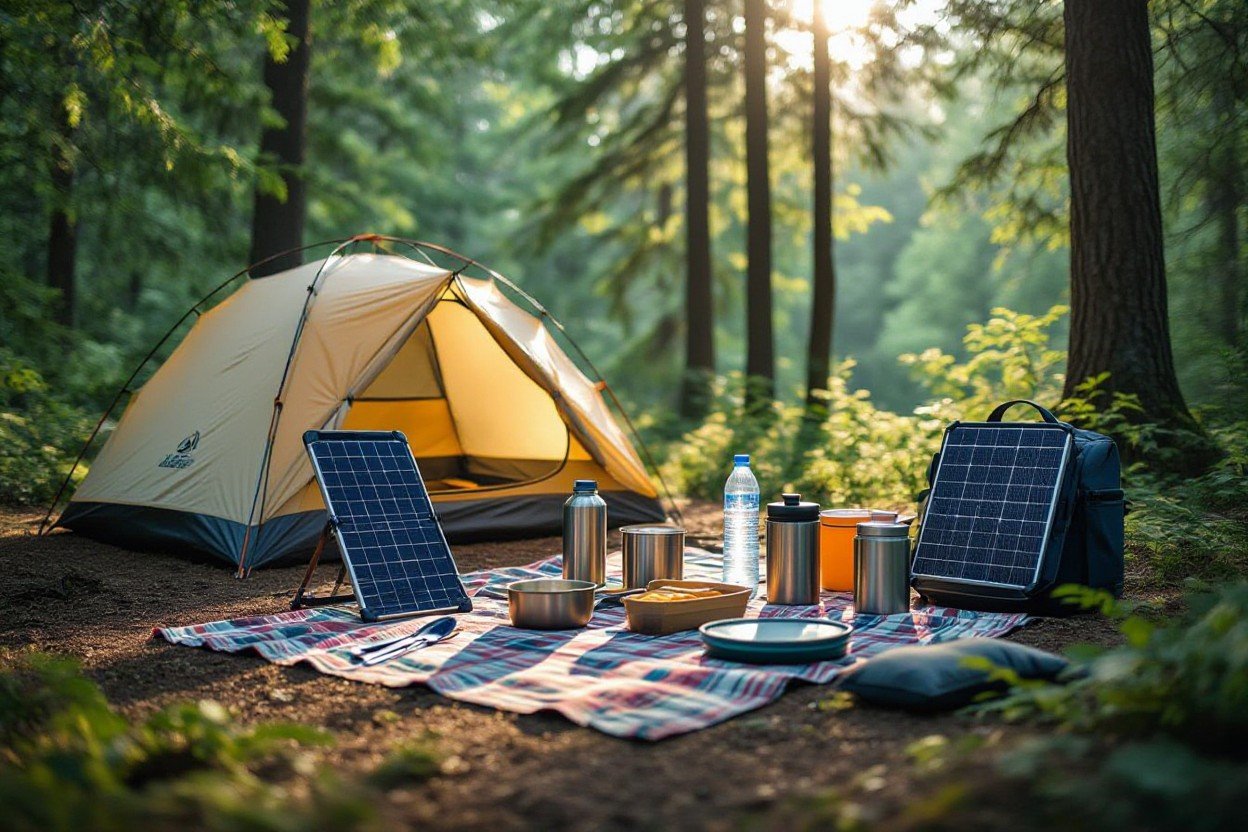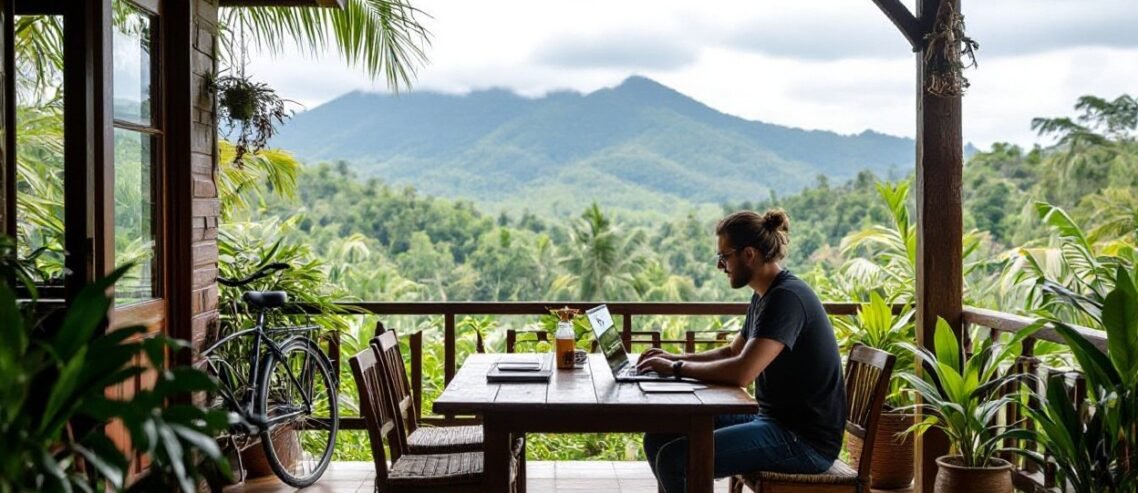Sustainable & Slow Travel for Digital Nomads
You have the unique opportunity as a digital nomad to transform your travel experience by embracing sustainable and slow travel practices. Prioritizing longer stays helps you deeply connect with local cultures while reducing the environmental impact of frequent flights. Choosing eco-friendly lodging and supporting local economies through thoughtful spending not only benefits your destinations but also fosters authentic, responsible travel. By integrating these habits into your journey, you actively contribute to preserving the places you explore and create meaningful, positive change as you work remotely around the world.
Key Takeaways:
- Digital nomads are embracing slow travel by opting for longer stays, allowing deeper cultural immersion and reduced travel-related emissions.
- Eco-friendly lodging choices, such as sustainable accommodations and green-certified hotels, are becoming a priority to minimize environmental impact.
- Impact travel encourages supporting local economies through engagement with community-based businesses and responsible tourism practices.

The Case for Slow Travel: Why Less Is More
Adopting slow travel transforms your journey from a checklist of sights into an immersive experience that can foster sustainable habits and genuine connections. By lingering in one place for weeks or even months, you reduce the environmental footprint associated with frequent flights and constant movement. This approach encourages you to choose eco-friendly lodging options like locally owned guesthouses or renewable-energy-powered co-living spaces, directly supporting communities rather than global chains. Furthermore, slow travel allows you to budget more effectively and engage with the local economy in meaningful ways, helping artisans, farmers, and small businesses thrive.
Moving beyond the rapid pace of typical tourism, slow travel invites you to appreciate the rhythms and nuances of daily life in each destination. Stretching your stay minimizes the stress of packing and logistical upheaval, letting you focus instead on building relationships and understanding the culture in depth. Many digital nomads who embrace this style report higher satisfaction and a stronger sense of belonging, which can translate into more productive and creative work during their travels.
Mental Health Benefits of Extended Stays
Extended stays provide a rare opportunity to establish routine, a sense of stability often lacking in the dynamic lifestyle of digital nomadism. By settling into a community, you lower the constant cognitive load that comes with navigating unfamiliar environments, transportation systems, and intermittent Internet quality. Studies have shown that reducing these stressors correlates with lower cortisol levels and improved mood, making your travel period not just more enjoyable but healthier overall.
Spend longer in one location, and you’re likely to notice improvements in your sleep patterns, decreased anxiety, and a stronger support network forming. This mental health boost supports your productivity and creativity, turning your work sessions into more focused, inspired periods. Digital nomads who invest in slow travel often emphasize how extended stays allow their minds to relax and recharge, avoiding the burnout common in fast-paced travel schedules.
Deepening Cultural Connections Through Slow Living
Slow living enables you to shed the outsider label quickly, shifting from a transient visitor to a community participant. Engaging in local markets, volunteering, or attending neighborhood events over several weeks opens doors that a short stay never could. Such interactions reveal authentic customs, dialects, and regional traditions that typical tourism lanes overlook. Your longer presence fosters trust, inviting locals to share stories, recipes, and historical insights that enrich your understanding of the place.
The extended timeframe also allows you to observe and sometimes partake in seasonal practices or festivals that only occur at specific times of the year. For example, staying in Bali for three months might coincide with Nyepi, the Day of Silence, offering a rare, immersive spiritual experience. Similarly, living in a small town in Italy could let you join harvest celebrations, which connect you to centuries-old agricultural traditions. These moments deepen your cultural empathy and broaden your worldview beyond surface impressions.
Additional layers of cultural connection come from consistent interaction with local businesses and neighbors. Regular visits to the same cafés or markets build rapport that encourages authentic exchanges, providing you insight into nuances like family life, everyday challenges, and community priorities. Over time, this form of slow travel can transform passive observation into active participation, making your journey not only sustainable but profoundly enriching.

The Eco-Friendly Nomad: Sustainable Practices for Travelers
Longer stays naturally lead you to become a more responsible traveler by allowing greater immersion in local communities and cultures. This approach often moves you away from the fast-paced tourism model that strains ecosystems and infrastructure. Integrating sustainable habits—like choosing accommodations that prioritize environmental stewardship and reducing waste—can significantly lessen your impact while enhancing the quality of your experience. Opting for impact travel means your visits not only respect but actively support the places you call home temporarily.
Maintaining an eco-conscious mindset throughout your journeys encourages you to think beyond convenience. By intentionally aligning your choices with sustainability principles, you contribute to preserving the destinations that fuel your work-life balance. Whether it’s shifting to public transportation, avoiding single-use plastics, or seeking out responsible tour operators, these efforts collectively help promote a travel culture where longevity and respect for the environment outweigh rapid turnover.
Choosing Green Accommodations with Purpose
When dicking out a place to stay, you can evaluate its environmental footprint by investigating certifications such as LEED, Green Key, or EarthCheck, which verify energy efficiency, water conservation, and waste reduction practices. Accommodations that employ solar energy, have in-house recycling programs, or use biodegradable toiletries demonstrate tangible commitments to sustainability. Property owners in eco-lodges in Costa Rica, for instance, have implemented rainwater harvesting and native vegetation restoration, protecting local biodiversity while offering you a unique living experience.
Beyond environmental credentials, consider how your stay impacts the local economy. Smaller boutique hotels or family-run guesthouses generally funnel more revenue directly into the community. Participating in local initiatives, such as community clean-ups organized by your host or staying in homestays, helps nurture authentic relationships while reducing the often invisible harms of mass tourism. This type of accommodation supports slow travel principles by encouraging longer stays, deeper engagement, and a lighter ecological footprint.
Minimizing Your Carbon Footprint While Traveling
Reducing emissions from transportation constitutes one of the most effective ways to shrink your travel carbon footprint. You might choose to explore regions accessible by train, bike, or electric vehicles instead of defaulting to short-haul flights. For example, Europe’s extensive rail network enables you to connect cities while emitting up to 90% less CO2 compared to planes. Booking direct flights where possible also limits additional emissions from takeoffs and landings, which represent a disproportionate share of an airplane’s carbon output.
In addition to transportation choices, packing light can produce measurable differences with every trip. Airlines report that for every extra kilogram carried, fuel consumption increases, so a streamlined suitcase not only saves you effort but reduces emissions indirectly. You could also offset remaining carbon by supporting verified reforestation or renewable energy projects through platforms like Gold Standard. Such programs help neutralize your unavoidable footprint by funding sustainable development initiatives worldwide.
Implementing sustainable travel apps can further empower your low-impact efforts. For instance, tools like Giki Zero provide personalized carbon calculators and suggest greener alternatives during trip planning. Engaging with these resources allows you to quantify your footprint in real time, highlighting areas to improve and tracking progress as you travel.
Supporting Local Economies: The Impact of Conscious Spending
Allocating your travel budget intentionally has a significant ripple effect on the communities you visit. By choosing to spend on locally owned accommodations, eateries, and services, you directly enhance the economic resilience of the area. Research from the Travel Foundation shows that up to 70% of your money stays within the community when you opt for local businesses, compared to less than 30% with multinational chains. This not only helps preserve cultural heritage but also empowers residents by providing sustainable employment and encouraging small business growth.
Longer stays amplify this positive impact, allowing you to build meaningful connections and contribute steadily rather than engaging in quick, high-turnover spending. Your consistent patronage makes a visible difference, supporting neighborhood economies beyond tourist hotspots. Engaging in impact travel can also stimulate investment in community infrastructure, indirectly improving services for both locals and visitors, creating a mutually beneficial cycle of growth and sustainability.
Ethical Choices: Prioritizing Local Businesses
Opting for locally owned shops, restaurants, and lodging ensures your spending fosters entrepreneurship and community welfare. For instance, choosing a family-run guesthouse over international hotel chains keeps profits circulating within the community while often providing you with a more authentic and intimate experience. Many of these businesses reinvest earnings into local conservation projects or employ residents, reinforcing social and environmental benefits simultaneously.
Markets, artisan workshops, and street food vendors often reflect a community’s unique character and provide avenues for you as the traveler to support traditional crafts and sustainable practices. Some destinations have even begun certifying local businesses that meet ethical and environmental standards, making it easier to identify where your money can have the greatest positive effect. Your conscious choice prevents economic leakage that can otherwise dilute the value generated by tourism.
Engaging with Communities for Authentic Experiences
Participating in locally guided tours, cooking classes, or cultural workshops opens doors to deeper understanding and mutual respect. Many communities offer experiences led by locals that not only enrich your journey but channel revenue directly into the hands of residents. Such interactions help you grasp the social and environmental challenges these destinations face, inspiring a more mindful approach to travel.
Beyond economic benefits, these engagements foster sustainable tourism practices by prioritizing small-scale, community-centered initiatives. You might join a community-led wildlife conservation project or partake in traditional farming activities, experiences unavailable through mass tourism. This approach aligns with slow travel ideals, cultivating genuine connections while minimizing your carbon footprint and cultural disruption.
Deeper immersion also expands your perspective on global interdependence — witnessing firsthand how your choices affect livelihoods and ecosystems enhances your role as a responsible traveler. Involving yourself with community projects often reveals scalable models of sustainable development that you can support or advocate for beyond your travels, turning personal experience into ongoing impact.
Practical Tips for Integrating Slow Travel into Your Nomadic Lifestyle
Adopting slow travel means reshaping your approach to moving between destinations. Instead of hopping from city to city every few days, focus on immersing yourself in one place for several weeks or even months. This allows you to develop deeper connections with the local culture, supports more sustainable tourism, and often leads to cost savings by reducing constant transit expenses. Choosing eco-friendly lodging, such as guesthouses that utilize renewable energy or locally sourced materials, further aligns your travels with sustainability goals.
Incorporate impact travel by engaging with local businesses, from markets and cafes to tours operated by residents. This approach not only benefits the community but also enriches your experience through authentic interactions. Keep a flexible itinerary that leaves room for unplanned discoveries and opportunities to contribute positively to the places you visit. After embracing these changes, your travel becomes less about ticking off landmarks and more about meaningful experiences and lasting memories.
Planning Itineraries that Embrace Long Stays
Design your itinerary with extended stays in mind, opting for locations where you can settle comfortably without the need to rush. Research destinations that offer reliable internet connectivity, diverse coworking spaces, and a welcoming nomad community to sustain your digital work routine. Places like Chiang Mai, Portugal’s Algarve region, and Medellín have become favorites among nomads for their balance of affordable living and infrastructure that supports longer residencies.
When opting for your next destination, evaluate how local culture, climate, and activities align with your lifestyle and work rhythm. Spend time identifying neighborhoods that offer both tranquility and access to amenities. Booking accommodations for a month or longer, rather than shorter hotel stays, often unlocks discounts and a homier environment that encourages deeper local integration. After planning in this way, your travel rhythm naturally slows, enabling you to savor each moment.
Balancing Work and Exploration: Time Management Strategies
Effective time management plays a pivotal role in blending work responsibilities with the pleasures of slow travel. Block scheduling, where you allocate specific hours for work and exploration, helps maintain productivity without sacrificing your desire to experience new surroundings. For instance, you might reserve mornings for focused work sessions and afternoons for cultural outings, hikes, or community events.
Utilizing tools like the Pomodoro Technique or digital calendars synced with your devices empowers you to manage tasks efficiently while leaving space for spontaneity. Many digital nomads adopt a four-day workweek or flexible daily hours to accommodate local festivals and weekends, embracing the unique pace of each destination. After mastering these strategies, you can cultivate a more balanced and fulfilling nomadic lifestyle that respects both your professional and personal aspirations.
Maintaining clear boundaries between work and leisure environments further enhances your focus. Setting up a dedicated workspace—whether it’s a coworking hub or a quiet corner in your accommodation—reduces distractions and signals to yourself that work time is separate from exploration time. This spatial and temporal distinction is key to preventing burnout and ensuring you enjoy the full benefits of slow travel while remaining professionally effective.

The Future of Travel: Trends Shaping Sustainable Nomadism
Digital nomads are redefining travel by prioritizing quality and sustainability over quantity and speed. Longer stays are becoming the norm, allowing you to immerse yourself more deeply in local cultures and contribute positively to those communities. This shift favors eco-friendly accommodations, ranging from off-grid cabins in Costa Rica to solar-powered hostels in Portugal, aligning your travels with the growing demand for environmental responsibility. Additionally, intentional spending on local businesses helps build stronger, more resilient economies, which in turn fosters sustainable tourism models that benefit both visitors and residents alike.
As sustainable nomadism gains momentum, you’ll notice an increasing number of destinations adapting to these preferences by providing infrastructure tailored to slow travelers: coworking spaces integrated with community initiatives, eco-conscious transportation options, and incentives for long-term stays. These trends signal a systemic change in the tourism industry, moving away from mass tourism toward a more mindful, impact-driven approach—one where your choices as a traveler directly support environmental stewardship and social equity.
How Technology Facilitates Slow and Sustainable Travel
Technology now plays a key role in enabling slow and sustainable travel by offering tools that help you make informed, eco-conscious decisions. Platforms like Workaway and TrustedHousesitters connect you with opportunities for long-term stays in exchange for volunteering or house-sitting, reducing reliance on commercial lodging and lowering your carbon footprint. Meanwhile, apps such as OLIO promote sharing surplus food locally, minimizing waste during your stays.
Innovations in transportation technology also broaden your sustainable travel choices. Electric bike and scooter rentals have become commonplace in many urban and rural destinations, allowing you to explore without carbon emissions. Moreover, real-time data on public transit and sustainable accommodation options can be accessed through dedicated eco-travel apps, empowering you to plan journeys that balance convenience with environmental impact.
Emerging Destinations That Champion Eco-Friendly Practices
You’ll find a growing number of destinations actively cultivating eco-friendly practices, making them ideal for digital nomads seeking sustainability in their travels. For example, Slovenia has committed to becoming the first zero-waste country in Europe by 2025, with cities like Ljubljana offering numerous green-certified accommodations and an extensive network of bike paths. In Southeast Asia, the island of Koh Yao Noi emphasizes community-led conservation projects and bans single-use plastics, encouraging visitors to engage in local sustainability efforts.
In South America, Uruguay is gaining recognition for its renewable energy transition, where over 95% of electricity is generated from wind and solar power, making it one of the greenest countries in the region. This commitment extends to tourism, with eco-lodges and sustainable farms welcoming nomads who want to align their lifestyle with the country’s environmental values. These destinations not only reduce your travel impact but also offer authentic experiences rooted in preservation and local empowerment.
Exploring lesser-known spots such as Portugal’s Alentejo region also rewards you with eco-conscious rural stays surrounded by organic farms and biodiversity projects. Places like these incorporate regenerative agriculture and zero-waste principles into their communities, inviting you to participate in sustainable living beyond typical tourist activities. Such destinations emphasize authenticity and stewardship, allowing your longer stay to leave a positive footprint both culturally and environmentally.
To wrap up
So, embracing sustainable and slow travel transforms the way you experience the world as a digital nomad. By choosing longer stays and eco-friendly accommodations, you not only reduce your environmental footprint but also deepen your connection with the local culture and community. This approach allows you to move beyond the typical tourist experience and engage more meaningfully with the places you visit, fostering a genuine understanding and appreciation for your surroundings.
Your travel choices have the power to support local economies sustainably, ensuring that your presence contributes positively rather than depleting resources. Adopting impact travel principles means you become an active participant in preserving the destinations you enjoy, promoting a cycle of respect and benefit for both you and the communities you encounter. By slowing down and traveling thoughtfully, you enhance your journey while paving the way for a more responsible and enriching form of digital nomadism.
FAQ
Q: What is slow travel and how does it benefit digital nomads?
A: Slow travel emphasizes spending extended time in one location rather than frequently moving between destinations. For digital nomads, this approach allows deeper cultural immersion, reduces travel-related stress, and lowers carbon footprints by minimizing air travel. Staying longer also helps build meaningful connections with local communities and provides a more balanced lifestyle between work and exploration.
Q: How can digital nomads choose eco-friendly accommodations?
A: Eco-friendly accommodations typically implement sustainable practices such as energy efficiency, water conservation, waste reduction, and use of locally sourced materials or organic products. Digital nomads can look for certifications like LEED, Green Key, or EarthCheck, read reviews highlighting eco-conscious efforts, or opt for stays like eco-lodges, renovated heritage homes, or community-run guesthouses. Supporting these options encourages more sustainable tourism development.
Q: In what ways can digital nomads support local economies through their travel?
A: Digital nomads can support local economies by prioritizing locally-owned businesses such as cafes, markets, and artisans rather than international chains. Participating in guided tours led by community members, purchasing handmade goods, dining at family-run restaurants, and hiring local service providers all help keep income within the community. This impact travel approach fosters economic empowerment and preserves cultural heritage.


Comments
Leave a Comment